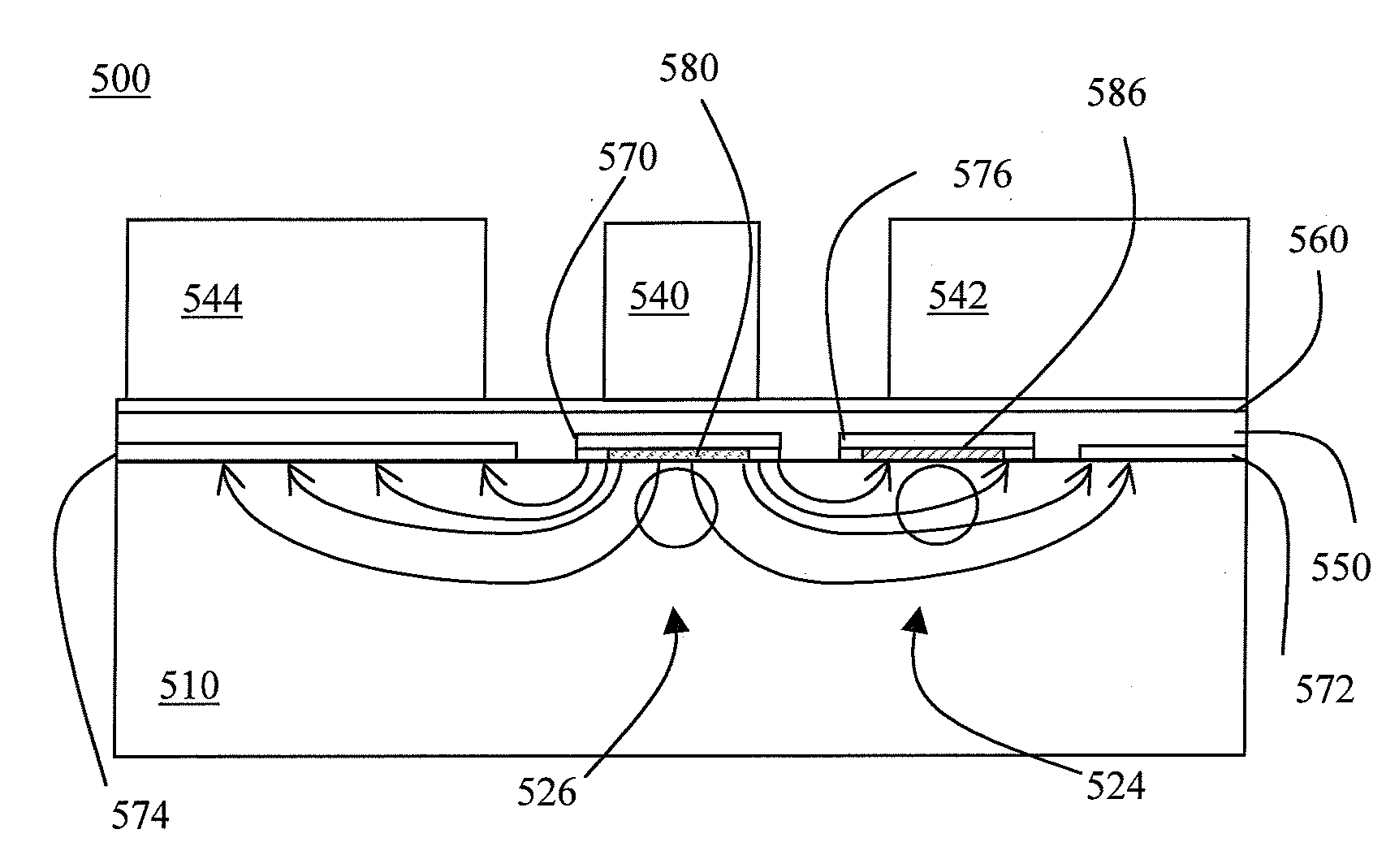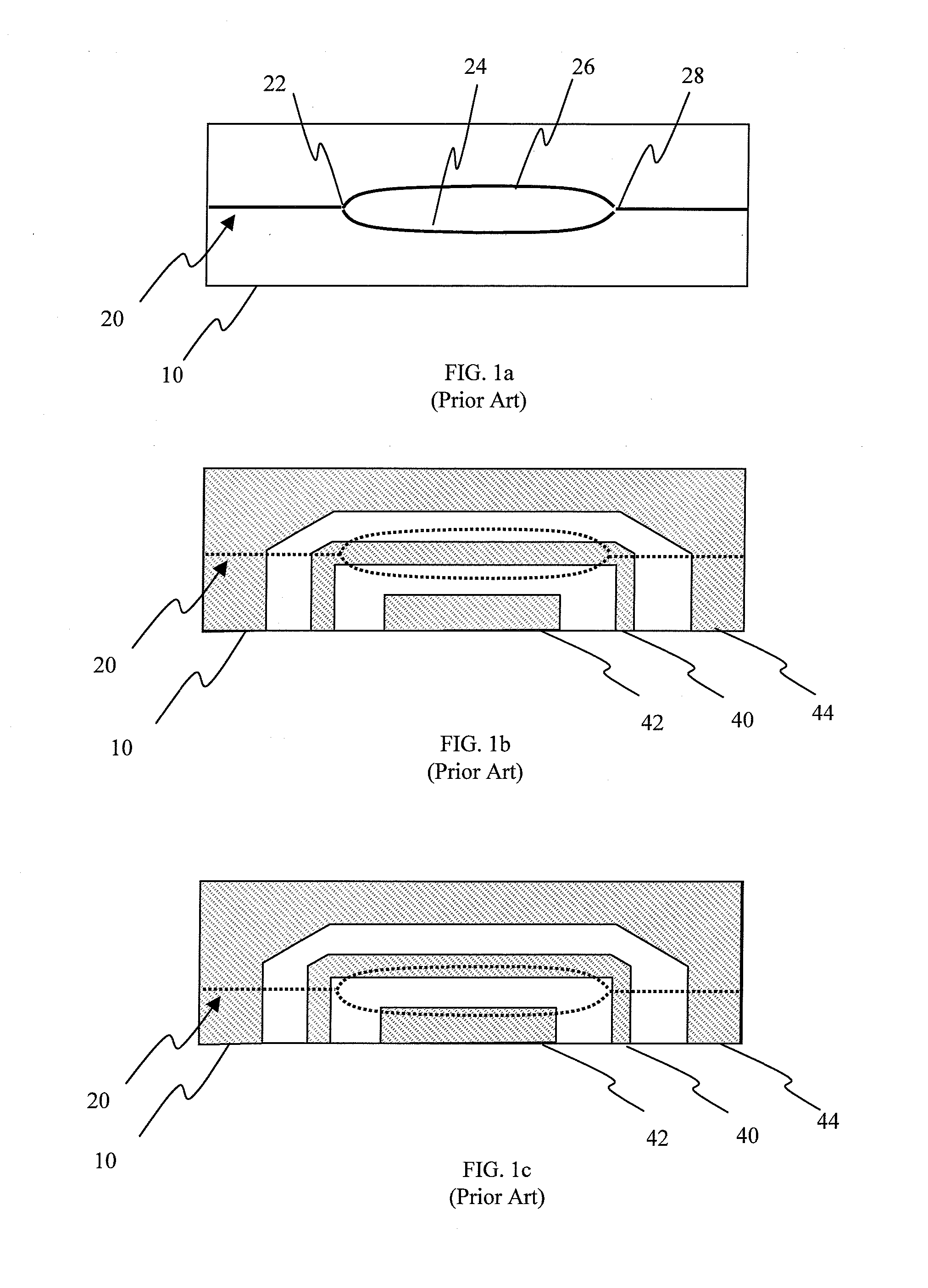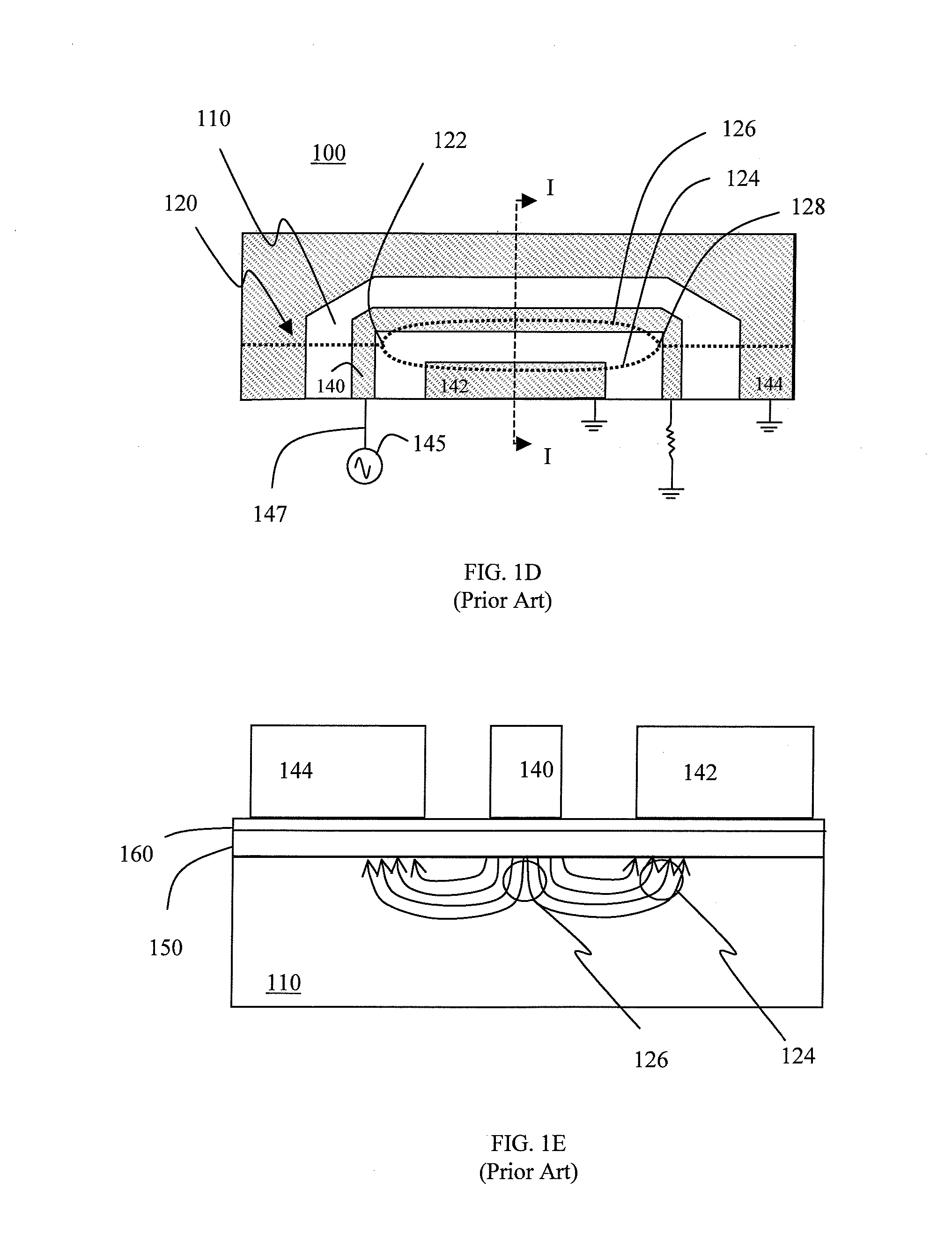Humidity Tolerant Electro-Optic Device
a technology of electro-optic devices and humidity tolerance, applied in the direction of optical waveguide light guides, instruments, coatings, etc., can solve the problems of temperature-induced bias drift and/or dc drift, dc drift, dc drift, etc., and achieve the effect of improving performan
- Summary
- Abstract
- Description
- Claims
- Application Information
AI Technical Summary
Benefits of technology
Problems solved by technology
Method used
Image
Examples
Embodiment Construction
[0056]Referring to FIG. 5a, there is shown a sectional view of an electro-optic device in accordance with one embodiment of the instant invention. The electro-optic device 500 includes a substrate 510, first 524 and second 526 optical waveguides, an RF signal electrode 540, RF ground electrodes 542, 544, an upper buffer layer 550, a bleed layer 560, first 570 and second 576 bias signal electrodes, bias ground electrodes 572, 574, and a lower buffer layer 580, 586.
[0057]In this embodiment, the substrate 510 is fabricated from an electro-optic material such as Z-cut lithium niobate (LiNbO3). Alternatively, the substrate is fabricated from another electro-optic material, such as Z-cut lithium tantalite (LiTaO3). The width, length, and thickness of the substrate 510 typically vary with the type of electro-optic device. For example, substrates for conventional Mach-Zehnder modulators are often about 40 mm long, 2 mm wide, and 1 mm thick. Of course, other dimensions are also possible.
[005...
PUM
 Login to View More
Login to View More Abstract
Description
Claims
Application Information
 Login to View More
Login to View More - R&D
- Intellectual Property
- Life Sciences
- Materials
- Tech Scout
- Unparalleled Data Quality
- Higher Quality Content
- 60% Fewer Hallucinations
Browse by: Latest US Patents, China's latest patents, Technical Efficacy Thesaurus, Application Domain, Technology Topic, Popular Technical Reports.
© 2025 PatSnap. All rights reserved.Legal|Privacy policy|Modern Slavery Act Transparency Statement|Sitemap|About US| Contact US: help@patsnap.com



